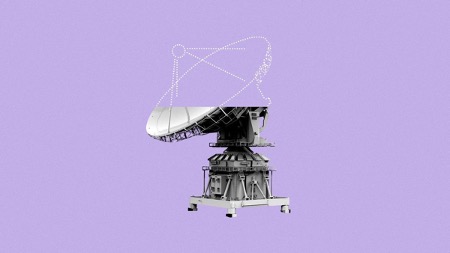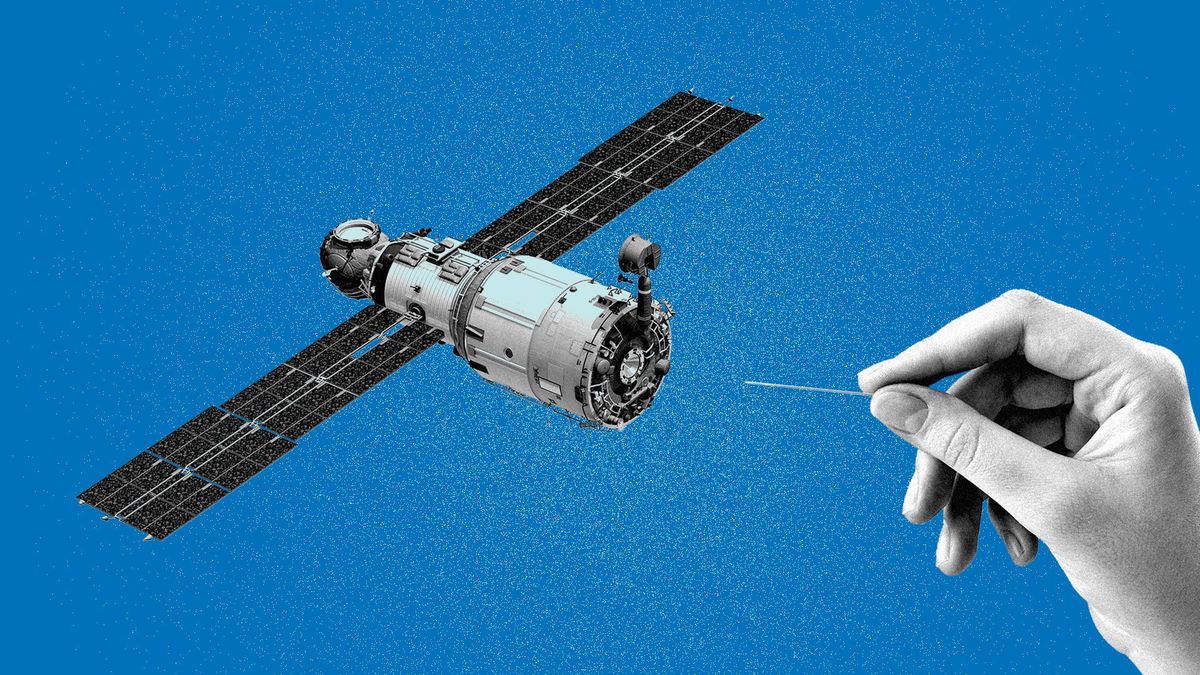Schrödinger's Broadband
May 2, 2025
Within the next couple of weeks, the Commerce Department is expected to announce changes to the BEAD program. It has been widely reported that Secretary Lutnick intends to shift funds from rural infrastructure investment into existing satellite service.
Spending public funds to subsidize an existing service raises two decades-old questions: Is satellite internet service sufficient for rural America? Is it even broadband?
Schrödinger’s Cat
The Schrödinger’s Cat thought experiment, proposed by Austrian physicist Erwin Schrödinger in 1935, was intended to illustrate a paradox of quantum superposition.
- Imagine a cat placed in a box with a radioactive atom, a Geiger counter, and a vial of poison that is released when the Geiger counter detects decay.
- In quantum mechanics, the radioactive atom exists in a state of decay and non-decay.
- To make the point of superposition more vivid, in Schrödinger’s thought experiment, the cat is both alive and dead at the same time, until someone opens the box to observe the cat.
What does this have to do with broadband?
Satellite Internet Service is Both Broadband and Not Broadband at the Same Time

Satellite internet access has been around for nearly 30 years.
- Hughes launched a one-way internet service (downloads only) in 1996, then a two-way service in 2002.
- Wildblue and Hughes both used geostationary satellites, as did Viasat when it launched in 2011.
- Starlink launched its low earth orbiting satellite (LEO) service in 2020, under the brand “Better than Nothing Beta,” which it then expanded throughout most of the U.S. in 2021.
- Amazon’s Project Kuiper and other LEO services (European, Chinese) are being launched as well.
No one questions whether satellites can deliver internet access. For the past fifteen years, the critical question has been whether any of the satellite services constitutes broadband internet access.
Broadband is a matter of definition, capability, and capacity.
- The federal definitions to qualify for broadband have evolved over time from 4/1 Mbps to 100/20 Mbps speeds.
- In general, the FCC’s definitions require less than 100 millisecond latency, no data caps, and prices within two standard deviations of the national average.
- I should note that these definitions of broadband fall far short of broadband available today to most Americans, which is multi-Gigabit downstream and upstream speeds.
The real question regarding satellite internet is capacity.
- To meet the Universal Service test, a service must be able to deliver to all locations simultaneously, since the assumption is that the recipient of funds in an unserved area will, at least initially if not permanently, become the sole provider.
- If a satellite provider cannot deliver broadband to all locations in a given geography, then it cannot receive Universal Service funds for that area.
- It is both broadband and not broadband.
No federal or state government agency has taken the position that satellite service equals broadband. If satellite service did equal broadband, then:
- Why has there been funding for federal and state rural broadband programs?
- Why have Congress and the FCC continued to spend public funds to improve rural broadband?
- In short, if satellite equals broadband – why doesn’t rural America already have broadband?
Is satellite internet really broadband? It is, as Schrödinger’s cat, both broadband and not broadband at the same time.
Or, to paraphrase Starlink’s self-definition: It is “better than nothing” broadband.
Consider These Points

Between 2011 and 2020, the FCC spent tens of billions in Universal Service funds for telecommunications companies to upgrade their networks in rural areas for broadband.
- If any of the satellite providers had been able to deliver broadband, that spending would have been unnecessary.
In 2020, Starlink sought to participate in the Trump Administration’s Rural Digital Opportunity Fund (RDOF) auction at the Gigabit bidding tier.
- The FCC denied Starlink, presumably because it had failed to demonstrate it actually could deliver Gigabit services.
- Starlink was allowed to bid at the 100 Mbps tier, yet even at this tier of service, it failed to demonstrate it could reliably deliver service to all the areas it won at auction.
- The Trump and Biden Administrations both previously rejected Starlink’s technology claims. State broadband offices should be given access to that data and analysis before making significant awards to Starlink.
In 2020, the CARES Act permitted funds to be spent by state governments on broadband.
- In one remarkable example, the state of Mississippi provided $75 million of funding, matched by $75 million from electric cooperatives, to build – over just a few months – thousands of miles of fiber reaching hundreds of thousands of unserved rural Mississippians.
- If satellite internet service had been adequate, rural America would not have been hit so hard by the lack of broadband during COVID.
In 2021, the American Rescue Plan Act (ARPA), which provided funding for states and counties, permitted funds to be spent on broadband.
- Even though ARPA funds could be spent for various purposes, most states and many counties directed that the funds be spent on areas that lacked broadband.
In 2021, Congress appropriated $42.45 billion for rural broadband for areas lacking 100/20 Mbps service.
- If Hughes, Viasat, or Starlink had such service available, this funding too would have been unnecessary.
In 2022, NTIA determined that satellite broadband would not be considered broadband when considering whether a location was served, unserved or underserved for BEAD.
- Congress intended for the BEAD program to be an investment in rural America.
- If satellite service covered everywhere, there would be no need for this investment.
In 2023, the FCC, in its third iteration of funds for small telecommunications companies, adopted the Enhanced ACAM program, an $18 billion program that requires upgrades of rural networks to 100/20 Mbps.
- Again, if the FCC believed then or today that satellite companies offered adequate 100/20 Mbps service, this spending too was unnecessary, even wasteful.
The Big Issue

If Republican and Democratic Administrations, federal and state agencies, county governments, and rural residents repeatedly reject the idea that satellite service equals adequate broadband internet service, why am I bothering to raise it here now?
Watch what the Commerce Department decides this month regarding one aspect of BEAD – setting a per location spending cap below the amount already appropriated by Congress and allocated to the states.
The Commerce Department may suddenly decide to provide support at levels that will only subsidize satellite dishes and installation.
- If the Commerce Department caps BEAD spending below the level already set by Congress – approximately $10,000 per location – satellite service will be the primary beneficiary — and rural America will again be the biggest loser.
- This one decision will reduce rural investment, damage rural economies, and undermine rural broadband for at least a generation to come.
That is what is at stake in the Commerce Department:
Nothing short of the future of broadband for rural America.
